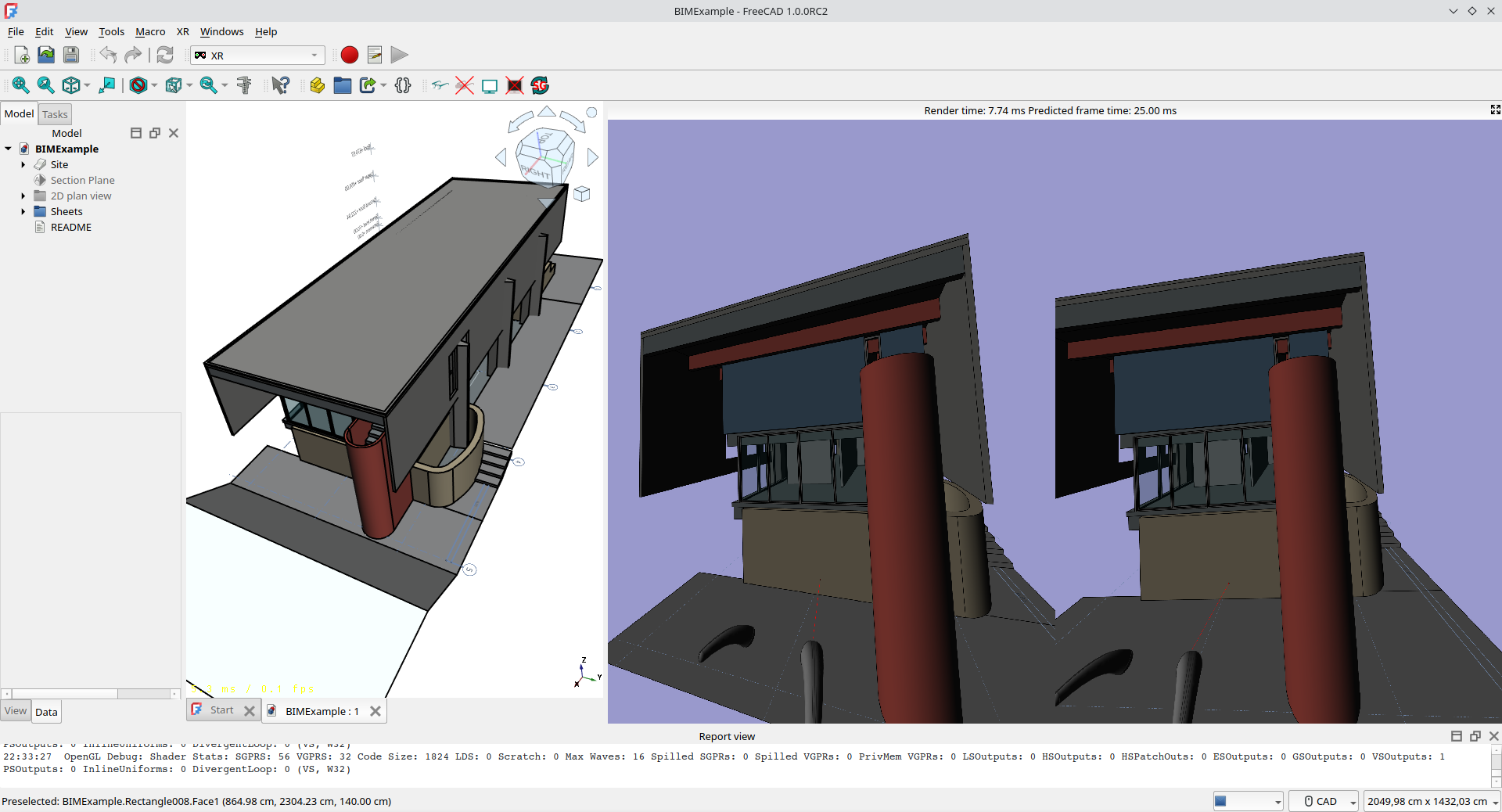FreeCAD XR Workbench
A Virtual Reality (OpenXR) workbench written in Python. Aims for easier installation and more flexibility than C++ XR fork.

Prerequisites
Software Dependencies
- FreeCAD 0.20 or later
- Python 3.11+
- an OpenXR Runtime, it can be selected manually with:
XR_RUNTIME_JSON=json_file_placement FreeCAD_executable
an example:
XR_RUNTIME_JSON=/usr/local/share/openxr/1/openxr_monado.json ./FreeCAD_1.0.0-conda-Linux-x86_64-py311.AppImage
Note: the OpenXR has to support XR_KHR_opengl_enable extension. Known runtimes that support this extension include SteamVR and Monado.
Python libraries
- pyopenxr
- PyOpenGL
Installation of the libraries:
- Linux:
pip install pyopenxr - Windows: navigate to the
FreeCAD_xxx/bindirectory and run:python.exe -m pip install pyopenxr
Hardware
- Any HMD supported by OpenXR (HTC Vive, Valve Index, Oculus Rift, or a Windows Mixed Reality headset)
Installation and Usage
Copy the freecad-xr-workbench directory to FreeCAD's Mod directory:
- Linux
/home/username/.FreeCAD/Mod/(can be/home/username/.local/share/FreeCAD/Mod/in old releases) - Windows
%APPDATA%\FreeCAD\Mod\, which is usuallyC:\Users\username\Appdata\Roaming\FreeCAD\Mod\
See also: FreeCAD Wiki: Installing more workbenches
A new XR workbench will appear.
Movement in the 3D space
The XR workbench can use two motion controllers to introduce artificial movement on top of the room-scale (real world) movement. There are two modes (select one in Edit->Preferences->XRWorkbench):
Arch-like movement:
- analog stick/trackpad of the primary (default left) controller moves viewer up/down and left/right,
- analog stick/trackpad of the secondary (default right) controller rotates viewer around center of the HMD and moves forward/backward.
Free movement:
- analog stick/trackpad of the primary (default left) controller moves viewer forward or backward along the controller axis,
- analog stick/trackpad of the secondary (default right) controller rotates viewer around center of the controller.
Additionally, a teleport movement is available: press secondary (default right) controller trigger, a ray become visible. Release the trigger, you will be teleported to place where the ray was intersecting (indicated by a small sphere) an object.
Known issues:
Wayland/EGL support not implemented yet.
Tips and tricks:
Linux specific:
SteamVR performance can be abysmal, it is often much better with Monado. However, running Monado with libsurvive using multiple Lighthouses can cause bad tracking. Fortunately, there is a way to combine the best of both world - use Monado with SteamVR tracking:
STEAMVR_LH_ENABLE=true monado-service
License
Check LICENSE for details.